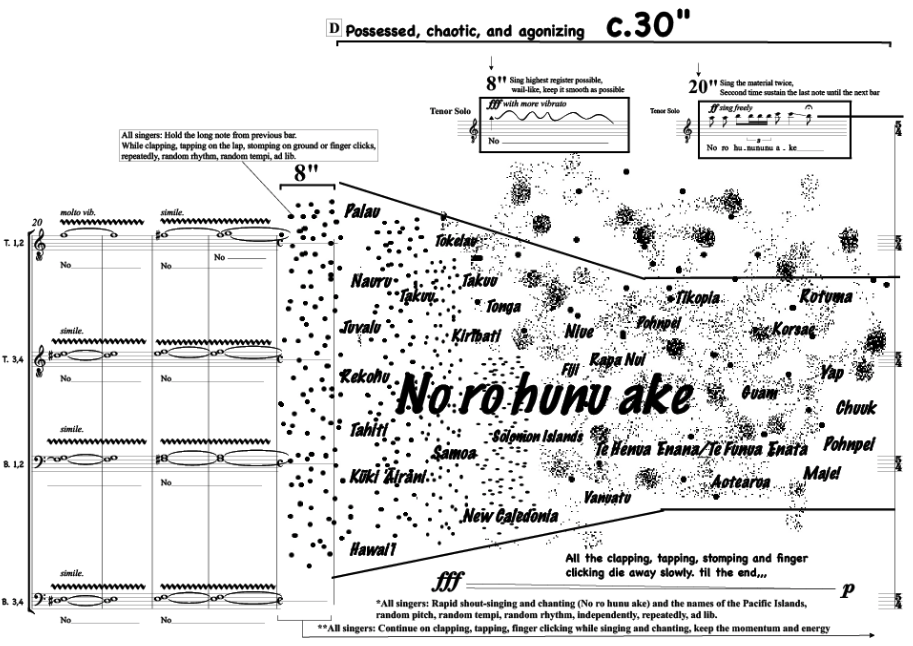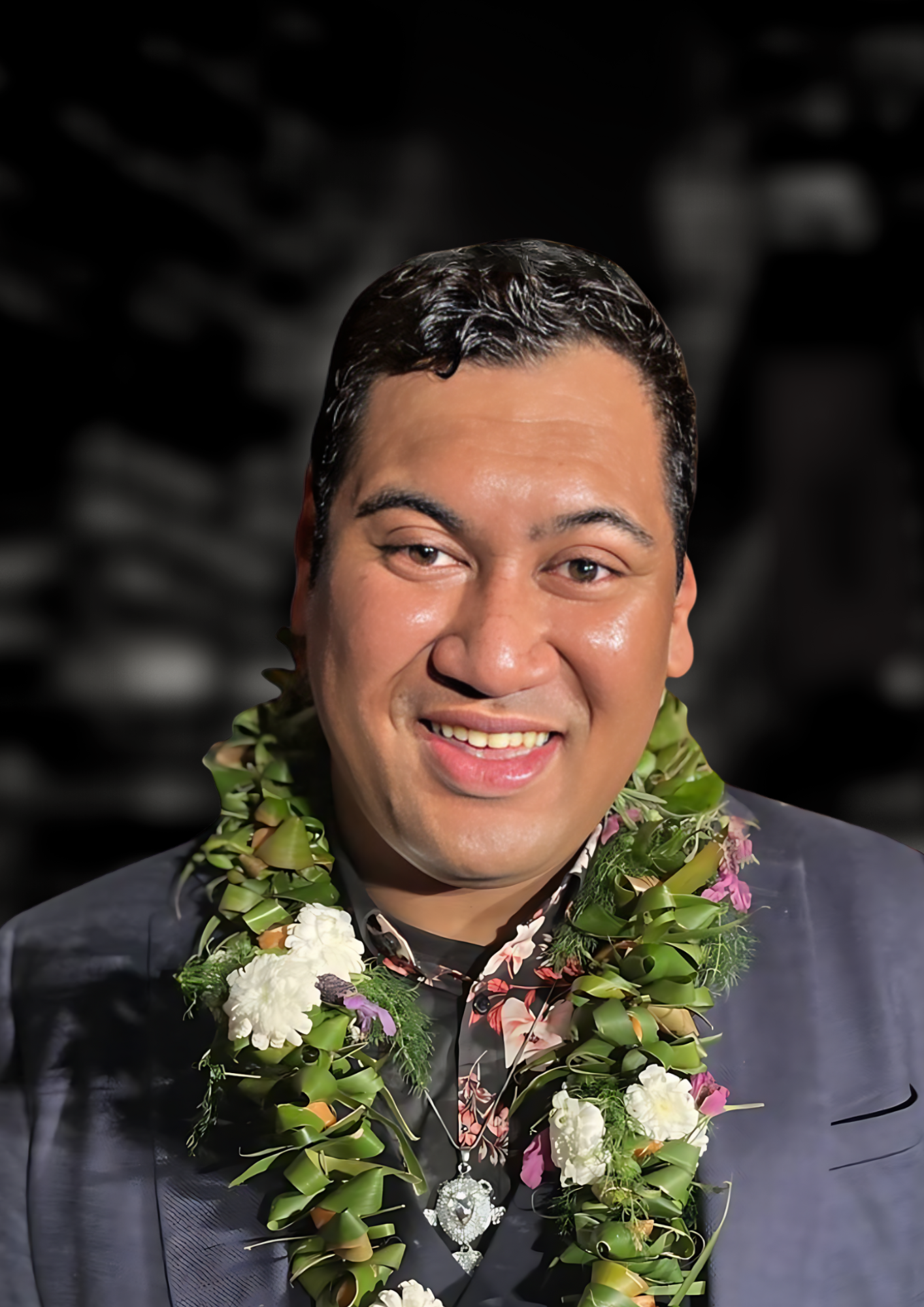Joshua Pearson is a finalist for the 2023 SOUNZ Contemporary Award | Te Tohu Auaha for his work, No ro hunu ake. We caught up with Joshua to find out more about the piece.
What was the inspiration or process behind the creation of No ro hunu ake?
I watched the documentary film There Once Was An Island: Te Henoa E Noho during my time as a music student at the University of Auckland when I took an anthropology paper. The film really explores the devastating impact of climate change, especially the rising sea levels, on the tiny atoll island called Takuu in the Polynesian outlier. It was a powerful experience for me, witnessing how the people on the island were dealing with the possibility of losing their home forever. It made me reflect on the broader issue of climate change, especially with the Moana islands and how it is very relevant today. Therefore, it pushed me to write something about it.
Originally, I wrote No ro hunu ake for SATB choir, but then, a great Tongan music colleague of mine, Lisiate Haunga approached me. He wanted me to adapt it for a TTBB choir composed entirely of Polynesian male voices for his conducting recital. This collaboration helped me with the creative process, especially during rehearsals. It allowed me to explore and experiment with different sounds, helping me solidify the concept and direction I had in mind. Also, during my time as a music student, I created an adaptation of 'No ro hunu ake' for dancer, performer, and multimedia presentation at the Lilburn Prize Concert. This adaptation won the Performance Prize Award, and I was proud to perform and collaborate with the talented Ethiopian-American dancer Safra Tadesse.
Last year, I was so grateful to have the opportunity for my choral piece, No ro hunu ake, to be performed by the Auckland Chamber choir for their special concert and for the ISCM New Music Days Festival in Tamaki Makaurau. I was fortunate to work with the amazing conductor, Jono Palmer. During my collaboration with him, I made some tweaks and revisions on the choral composition to help bring the important message forward and bring these ideas to life with the help of the chamber choir. Overall, It was an overwhelming experience to have it performed in public for the first time ever.
Can you explain what the title means? And how does it relate to the piece as a whole?
No ro hunu ake is a name that was given by the Moriori people, and it roughly translates to ‘Sprung from the earth.’
This phrase 'No ro hunu ake' holds significant meaning for the descendants of Rongomaiwhenua, as it refers to the protector of the land, often described as the 'land god'. It also invoke wishes for peace and prosperity for the land and its people.
In the choral piece, No ro hunu ake (sprung from the earth) takes on new meaning. It becomes a powerful symbol for our Moana communities as we face the challenges of climate change together with our voices and our bodies. To use song and ritual as a way to bring solidarity and unity. As the title evokes, we stand tall and resilient, drawing strength from our deep connection to the land and our commitment to preserving it for future generations.
 Page 4 of 'No ro hunu ake'
Page 4 of 'No ro hunu ake'
You describe this composition as a 'protest piece'. Can you tell us about the message you hope to convey and some of the musical techniques used to help accomplish this?
This ‘protest piece’ conveys a powerful message about the urgent issue of climate change such as rising sea levels and the threat it poses to island homes, especially in Moana communities, using musical techniques to help reinforce this message and create an emotional impact.
It was also inspired by past environmental protests such as Phil Dadson's protest song Pacific 3 2 1 Zero in the 1980s, highlighting the pressing need to tackle environmental threats against nuclear testing and waste dumping in the Pacific Ocean. Similar to Pacific 3 2 1 Zero, I’ve incorporated the names of all the Moana islands who were affected by climate change. To callout each island emphasises the need to protect these vulnerable island communities.
The use of body percussion and chanting extends the voices from Polynesian dance and movements, not only adding cultural authenticity but also connecting the composition to the heritage of the affected communities. This makes it a more powerful and evocative protest piece.
The rising semitones and dissonances within the music create a sense of tension and urgency, imitating the rising sea levels and the potential loss of island homes. This musical technique adds emotional depth to the composition and emphasises the gravity of the situation.
The piece is divided into different tempi sections, each with a distinct title and purpose. It starts with ‘Genesis,’ which represents the origins and ancestors of the land. It then transitions into ‘Ritualistic,’ which incorporates ancient ritual calls and responses. The ‘Lament’ section signifies the sorrow and grief of the culture and people slowly dying. Finally, the piece concludes with ‘Apocalyptic, Traumatic and Prophetic,’ creating a dramatic ending with chaotic cries and screams representing the people of Moana islands.
What kind of impact do you hope No ro hunu ake will have, both within the Moana communities and on a broader scale?
Within our Moana communities, I want this piece to serve as a strong reminder of how deeply connected we are to our land and to highlight the urgent issues we're facing today.
We not only have to reflect on climate change but also on recent issues and events, such as the fires in Lahaina, Hawai'i, the dumping of Japanese nuclear wastewater into the Pacific Ocean, and Tuvalu becoming the world's first digital nation. Looking at these issues and events are somehow connected and interrelated, which brings a huge impact on our Moana communities. Just Imagine what our islands will look like in the next 50 years or so.
I hope No ro hunu ake reaches people beyond our Moana communities, shedding light on the unique struggles and resilience of our islands, and raising awareness about the global problem of climate change and its impact on our vulnerable communities
I aim to provide a space to bring everyone together and uplift Moana voices, to start conversations and motivate action, to get involved in discussions and solutions related to climate change, and the preservation of our precious islands. As Epeli Hau’ofa puts it eloquently, "We should not be defined by the smallness of our islands, but by the greatness of our oceans. We are the sea, we are the oceans, Oceania is us."
What significance does being selected as a finalist this year for the SOUNZ Contemporary Award hold for you?
Being selected as a finalist for the SOUNZ Contemporary Award this year is truly a blessing and holds immense significance to me. Not only does it acknowledge my work, but it also increases awareness of the critical issue of climate change within our Moana communities. I feel deeply fortunate to stand alongside other exceptionally talented composers like Victoria Kelly and Nathaniel Otley, whom I've had the privilege of knowing through the music scene.
This recognition means a great deal to me as a Moana Pacific composer and a proud Sāmoan. It's a part of something truly prestigious, and I hope it inspires and encourages more Moana Pacific composers to engage in the contemporary classical scene.
